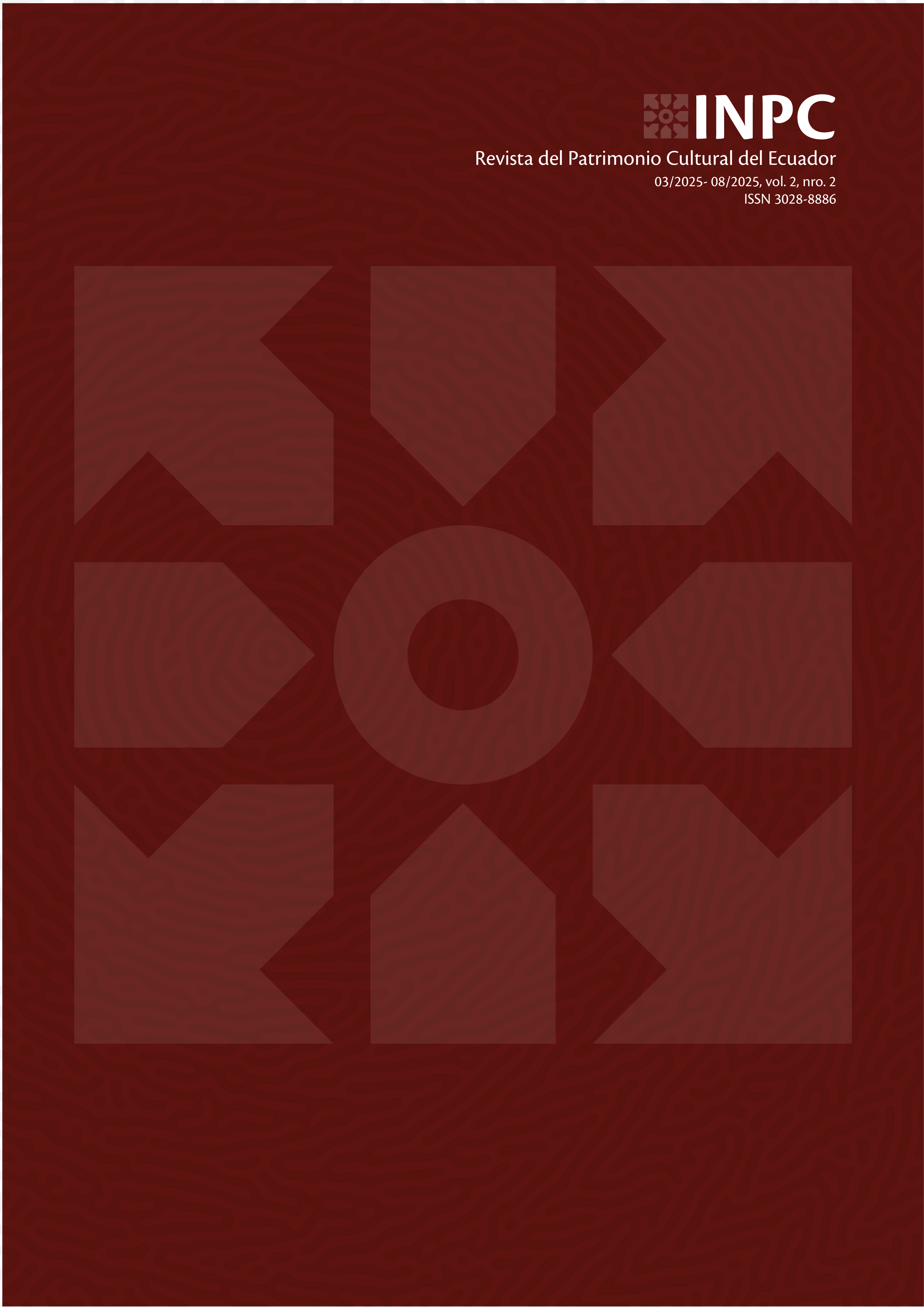Dialogues of Clay and Memory: Artisanal Knowledge and Creation with the Pre-Hispanic Past in La Pila (Manabí)
DOI:
https://doi.org/10.5281/zenodo.15116593Keywords:
pottery, crafts, archaeology, cultural heritage, EcuadorAbstract
This article analyses the artisanal practice in La Pila, Manabí, Ecuador, focusing on the production of replicas of pre-Hispanic artifacts as a form of identification with the past, which, when recreated, is constantly updated and re-signified. Through an interdisciplinary methodology that includes art, anthropology, archaeology, and cultural management, participatory workshops were conducted in the community, emphasizing the intergenerational transmission of artisanal knowledge. These workshops allowed for the exploration of how these practices reflect an active connection with local heritages and the current challenges faced by artisans. The text also addresses the historical tensions between the community and the State regarding heritage management, proposing a more inclusive dialogue that recognizes creativity and traditional knowledge as fundamental components of cultural heritage.
Downloads
References
Brodie, N., Kersel, M., Mackenzie, S., Sabrine, I., Smith, E. y Yates, D. (2022) Why There is Still an Illicit Trade in Cultural Objects and What We Can Do About It, Journal of Field Archaeology, 47:2, 117-130. https://doi.org/10.1080/00934690.2021.1996979
Castro, M., Labrada, M. y Chasing, E. (2017). Mujer y tradición cerámica en la costa ecuatoriana: indicadores etnoarqueológicos. En Lourdes Prados y Clara López (Eds.) Museos arqueológicos y género. Educando en igualdad. UAM Ediciones.
Cevallos, P. (2023). Réplicas y regresos: activar el pasado desde el arte contemporáneo. Index, Revista De Arte contemporáneo, 9(16). Recuperado de https:// revistaindex.net/index.php/cav/article/view/532
Cevallos, P. (2018). Desarchivar el museo. En: Guion Académico del Museo Nacional del Ecuador. Ministerio de Cultura y Patrimonio del Ecuador.
Ingold, T. (2019). Of Work and Words: Craft as a Way of Telling. European Journal of Creative Practices in Cities and Landscapes, 2(2), 5-17. https://doi.org/10.6092/issn.2612-0496/10447
Instituto Nacional de Patrimonio Cultural del Ecuador. (2011). Guía de identificación de bienes arqueológicos.
Phillips, R. y Steiner, C. (1999). Unpacking Culture. Art and Commodity in Colonial and Postcolonial Worlds. University of California Press.
Portisch, A.O. (2010). The craft of skilful learning: Kazakh women’s everyday craft practices in western Mongolia. Journal of the Royal Anthropological Institute, 16: S62-S79. https://doi.org/10.1111/j.1467-9655.2010.01610.x
Quijije, G. (2022). Puesta en valor de la artesanía en función del patrimonio cultural inmaterial: caso La Pila, cantón Montecristi. Proyecto de titulación, Universidad Estatal del Sur de Manabí.
Smith, P. (2018). Artisan Epistemology, en M. Sgarbi (ed.), Encyclopedia of Renaissance Philosophy, Springer International Publishing AG. doi.org/10.1007/978-3-319-02848-4_1182-1
Solórzano, M. (2016). Patrimonio cultural arqueológico e inmaterial de la parroquia rural La Pila. ReHuSo: Revista de Ciencias Humanísticas y Sociales, ISSN-e 2550-6587, Vol. 1, Nº. 1, págs. 49-62. https://doi.org/10.33936/rehuso.v1i1.292
Solórzano, M. (2018). Etnografía y arqueología: una mirada desde la alfarería al patrimonio cultural inmaterial en la parroquia rural La Pila. En: Guion Académico del Museo Nacional del Ecuador. Ministerio de Cultura y Patrimonio del Ecuador.
Yates, D. (2015). Illicit cultural property from Latin America: looting, trafficking and sales. En: Demaris, France (ed). Countering Illicit Traffic in Cultural Goods: The Global Challenge of Protecting the World’s Heritage, ICOM.
Published
How to Cite
Issue
Section
License
Copyright (c) 2025 Pamela Cevallos, Gema Quijije Lucas, Marco Emilio Vargas Buri

This work is licensed under a Creative Commons Attribution-NonCommercial-ShareAlike 4.0 International License.
INPC, Revista del Patrimonio Cultural del Ecuador provee acceso libre a su contenido digital para lectura y descarga, con el propósito de democratizar el conocimiento y la difusión de la investigación. Se permite el acceso y empleo del material siempre y cuando se reconozca a los autores/as, no se lo use comercialmente y se lo comparta con un criterio similar.
Los autores/as conservarán sus derechos de autor; podrán difundir sus artículos en otras obras impresas o digitales, sitios personales o institucionales, dando crédito a su publicación original en esta revista, reconociendo así su trabajo editorial y potenciando su alcance.








